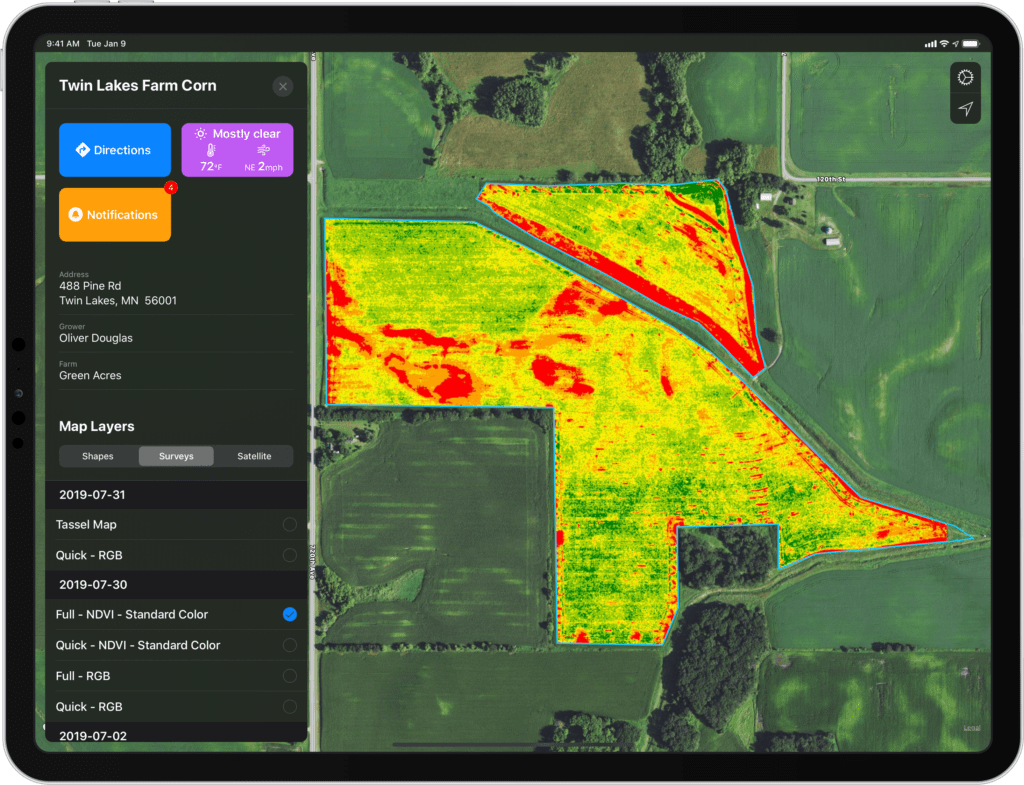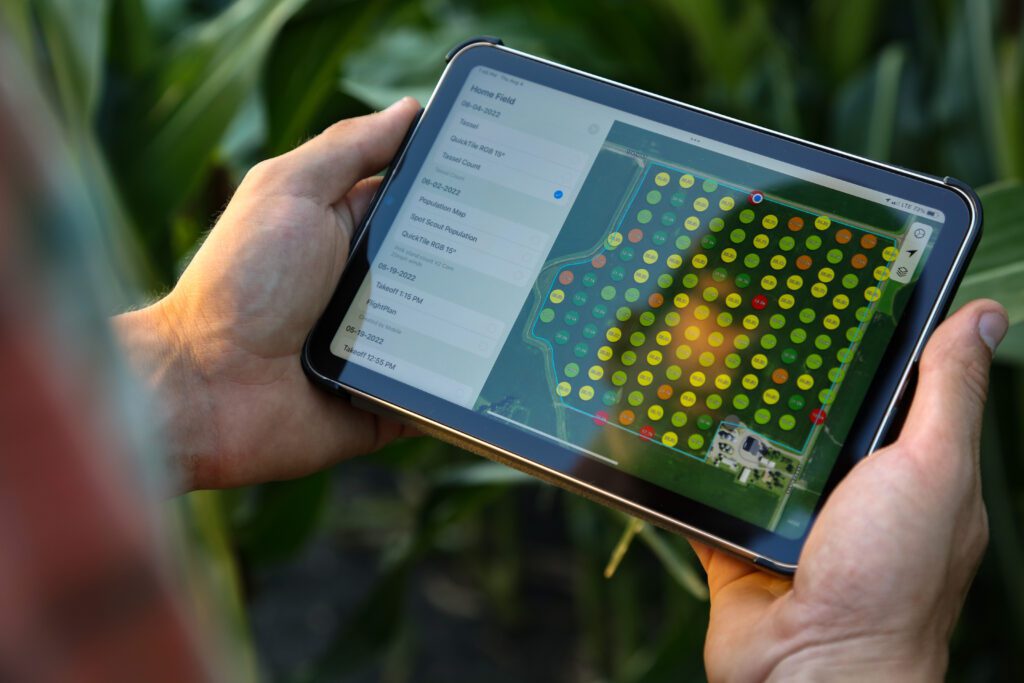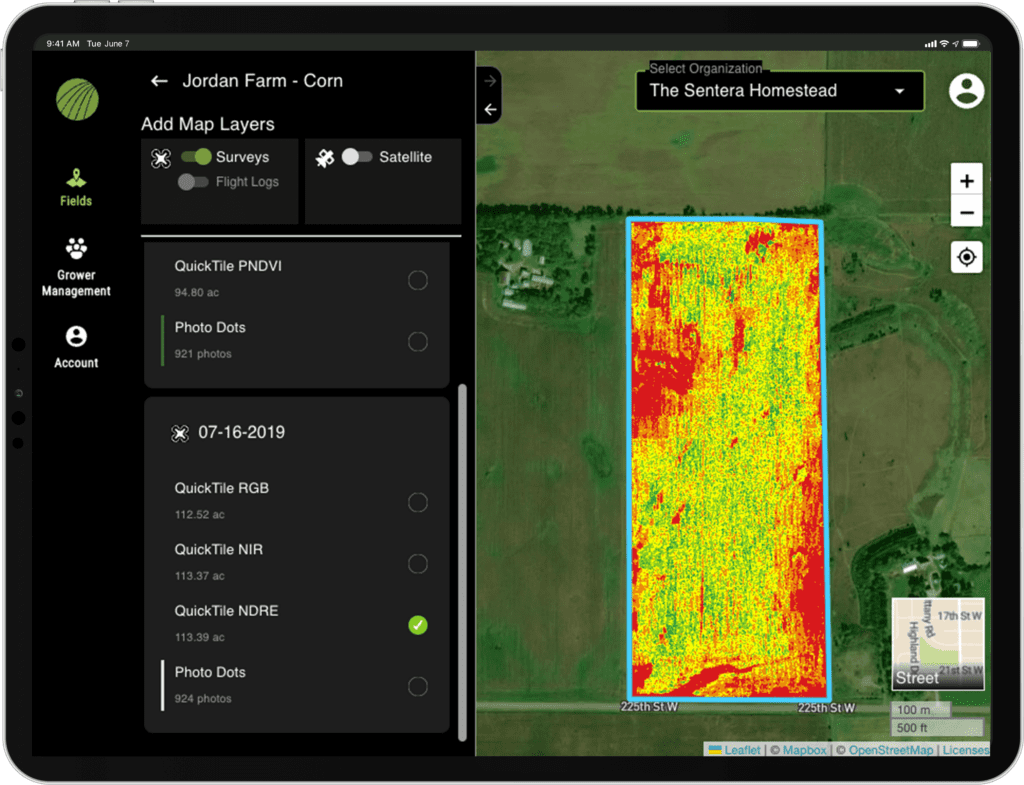In agriculture, managing the unpredictable is perhaps the most predictable element for agronomic leaders and growers. From conflicts related to economic sources to the unpredictability that comes from mother nature; the challenges can seem debilitating.
Weather patterns often rise to the top, and it’s hard to avoid the headlines showcasing the challenges it’s bringing to agriculture. Currently, all eyes are on the severe drought that has dehydrated multiple states. This extreme weather has everyone scrambling for resources and tools to mitigate these harsh conditions.
The good news? Technological advances in agriculture, particularly around precision ag tools, can serve as a resource to effectively mitigate these challenges while helping to drive productivity and increase efficiency. Especially with today’s supply chain issues and labor shortages, ag leaders need to figure out how to effectively do more with less.
Using Precision Ag Software to Dig Into Detail
Whether you call it precision ag or digital ag, it supports the full crop growth lifecycle to drive better outcomes and maximize yields. One of the ways it does this is by supporting agronomic leaders with data throughout every part of season – from pre-season decision making to post-season analysis.
From early indicators to field analysis, precision ag software steps up to provide key insights that combat inefficiencies and outside factors that are detrimental to your crops’ health. The core of these platforms provides essential satellite, weather, and soil data about what’s happening in your fields.
Weather data, for instance, will showcase key elements, like:
- Rainfall
- Growing Degree Days
- Upcoming forecast
- Temperature
Key weather events translate to in-app notifications in FieldAgent to uncover how these changes are impacting your crop health. For those looking to combat this year’s drought, this data can help determine water intake and fuel decisions to counteract the impact of limited rainfall. Whereas the weather data also shows the opposing side – too much water intake – and how it impacts the crops’ life. This can work to build solutions for better water management in the future.
Satellite data can provide multispectral indices, like RGB, NDVI, and NDRE, to get an indication of field performance throughout the entire season. While there are benefits to using drone data instead, satellite data serves as a good entry point to start to understand performance from a higher-level view.

NDVI with FieldAgent
For many, getting this level of detail – from key weather events to performance data – instantly boosts productivity and efficiency.
Detailed Reporting at Your Fingertips
To get even more detailed data, an ag drone system can capture high-resolution aerial imagery and translate the images into detailed measurements. Specifically, analytics like Stand Count and Tassel Count work to gain a better understanding on crop performance. This helps to estimate end-of-season yield, as well as inform input decisions throughout the season.

Accessing Tassel Count at the Field Edge
Using this, with satellite and weather data, FieldAgent compiles reports and generates a comprehensive story of your field’s performance. From here, you can visualize, report, and analyze analytics and data in real time, powering critical decision making.
The ability to access these reports and data analytics fuels critical decisions from the field edge to the office and everywhere in between. This flexibility adds a sense of convenience and efficiency whenever and wherever you need it.
Working Smarter, Not Harder with Precision Ag Software
That’s great and all, but what does that actually mean for you?
It is important to get a detailed understanding of emergence early in the season. For many, this can provide valuable insights. Such as, whether replant is needed or if certain inputs should be applied during early season to promote growth. Often, this is done via a spot–check method – going out to the field, counting some plants, and estimating the rest.
Without having access to multispectral indices or weather data in a precision ag software platform, this spot check would inform the decision on what action to take. But it’s not exactly accurate.
For one, using manual methods – like humans in the field – can often be error prone. Technology doesn’t get tired, but humans do – and that’s when mistakes happen. On top of that, using a sliver of insight and applying it to the entire field can be detrimental. What if there was a weather event that only impacted a corner of the field? What if there was a washout and because you only scouted a portion of the field, you had no idea? So now you think things look a lot better than they do.
Secondly, for agronomic advisors who work with several growers, time is of the essence. Boots-on-the-ground scouting is important, but it is time consuming and again, can be limited to smaller parts of the field. By using ag drone technology, you can cover an entire field in a fraction of the time. Not only this, but they also pull accurate and precise measurements to truly understand what’s happening.
The result? An opportunity to advise growers with data-driven insights. And in turn, becoming a more strategic partner building better relationships and selling more products.
And this doesn’t just apply to the beginning of the season. Using data-driven insights can provide benefits all season long. In mid-season for instance, it tends to be a little quieter. But let’s take this year. With rising costs and supply shortages, many growers are panicked to know what they needed to do and whether they should invest in key inputs now.

Insight Into Crop Health with NDRE
Visibility into crop health performance across acreage can provide direction on where to invest, and when. And, as an added bonus, you can start to track year-over-year trends to understand what’s happening. Yes, anecdotal data is available, but often that gets a little muddy as time goes on. This can inform purchasing decisions, particularly regarding key inputs that may be hard to find or are rising in cost.
From these two use cases to end-of-season yield predictions and into post- and pre-season field analysis and preparation, using precision ag software and data-driven insights goes beyond just having data to fuel decision making. It can drive efficiency – meaning that your boots-on-the-ground scouting focuses on the areas that need the most focus. While also promoting productivity by helping to do more with the resources that are available to you.
A More Productive Future
Accurate and trustworthy data and insights will maximize all outcomes while working towards minimizing problem areas. Agriculture may be playing catch up to the rest of the world, but we have witnessed how big data has transformed other industries.
Agriculture is expected to be no different. Whether it be topography, crop health, deficiency, weather, or whatever the challenge may be, data analysis can efficiently indicate problems. Then, taking these data analytics and creating reports directly assists in combating, prioritizing, and minimizing these issues.
Leveraging ag technology helps to maximize outcomes by increasing yields, promoting crop health, powering critical decisions, and minimizing resources needed. This is especially vital with the already limited resources available due to issues stemming from the unpredictability that will always be a challenge for growers and agronomic leaders.


